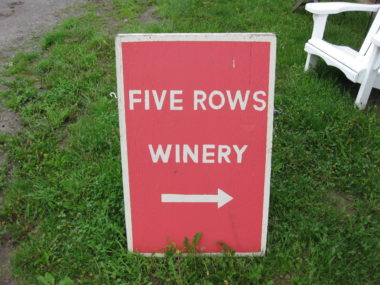What is it that makes our wines unique?
I’ve been asked to answer this question quite a few times over the last couple of weeks, so maybe some further explanation is necessary. I always start by stressing that the intricacies of our wines originate from thorough hand labour in the vineyard. But I now realize that this is a vague reason to many people. So I racked my brain today, while thinning Sauvignon Blanc, for a moniker to best describe the practice I employ. I settled on “Individual Vine Viticulture”.
Through many hours spent doing the same jobs to the same vines, I’ve come to realize that every vine is subtly different and needs to be treated as such. It really becomes obvious as you prune, tie down, shoot thin, shoot position, remove leaves and cluster thin, that each vine has its own “personality”. I’ve written about the broad definition of terroir in the past, and it’s effects are certainly applicable here.
These individual vine differences are especially observable in the Niagara region due to extreme soil variability and a consistently high incidence of winter injury. The re-planting of winter-killed vines leads to rows filled with multiply-aged vines, thus adding yet another level of variability that must be accounted for by the grower. I challenge anyone to find a vineyard in our region that has not been touched with winter injury over the years.
As the size of a vineyard increases it becomes next to impossible to treat each vine as an individual. That is why crew-based and mechanized labour (for leaf removal and pruning in particular) are on the rise in most vineyards. Jobs are done quickly, with a broad stroke and questionable accuracy. I strive to trend in the opposite direction, precise and methodical, where every vine gets my full attention. I can now better explain the second most asked question in the last two weeks: Why don’t you just expand your operation and make more wine?
It is my goal to continue to craft wines whilst practicing Individual Vine Viticulture on the rows I choose to vinify. Right now, I spend nearly every day from March to November obsessively tweaking my vines in one way or another. Scheduling days for actual “winemaking” jobs is always problematic but ultimately doable at our current production size of 500 cases. With wine quality at stake, Five Rows has no plans for expansion in the foreseeable future.
Go small or go home!

